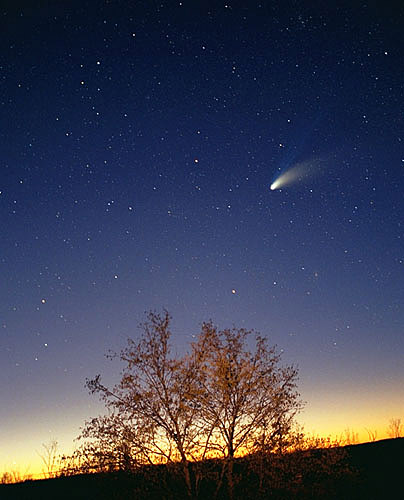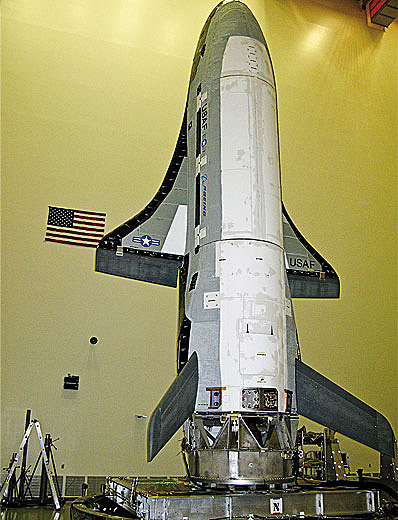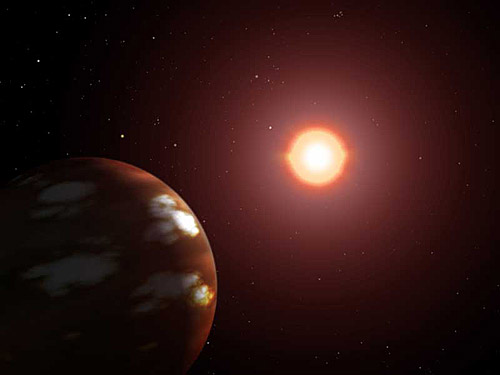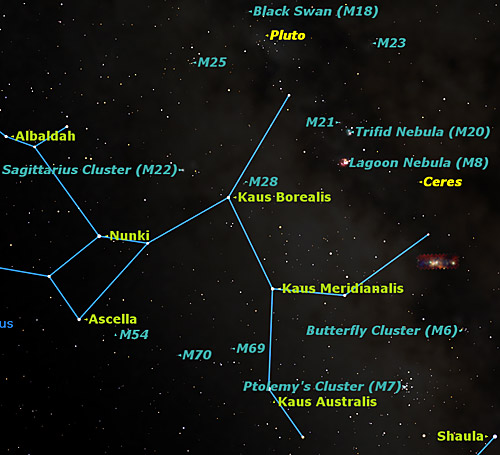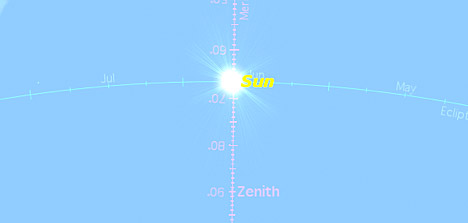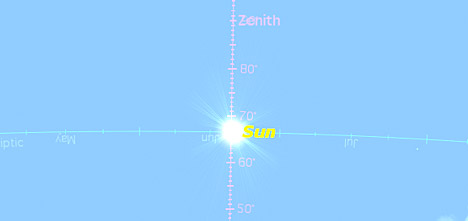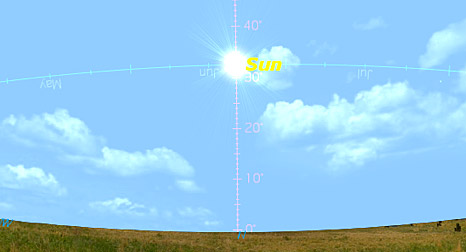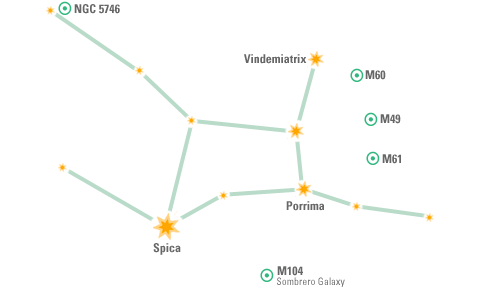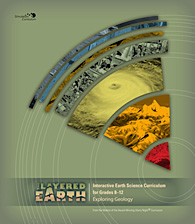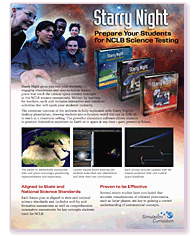 |
||||||||||||||||||||||||||||||||||||||||||||||||||||||||||||||||||||||||||||||||||||||||||||||||||||||||
For education orders please call 1-877-290-8256. Welcome again to our monthly newsletter with features on exciting celestial events, product reviews, tips & tricks, and a monthly sky calendar. We hope you enjoy it!
There's a misconception that in order to do real science and make astronomical discoveries, you have to be a professional astronomer. With modern telescopes and cameras, not to mention the internet, this is no longer true (if it ever was true). How can you, the amateur astronomer, get your fingers into the vast, empty, cold pie of astronomical research? Read on! Comets Comets are perhaps the most well-known amateur discoveries, because the International Astronomical Union officially names comets after their discoverers. What stargazer doesn't dream of that kind of glory? While the first named comet was named for Sir Edmund Halley, the man who calculated its orbit and predicted its return, modern astronomers simply have to find a comet and confirm that nobody knew about it already in order to get their name on it. The most successful comet-hunters are the ones who use photography in their searches. Carolyn Shoemaker has her name on more comets than does any other person, due to her participation in comet-hunting teams that use this method. Visual comet-hunters are dedicated folks who know the sky very well and spend hours peering through telescopes and binoculars, to find faint fuzzy objects where there aren't supposed to be any. Those of you who were looking skywards in the late 1990s will remember the spectacular naked-eye comets Hyakutake and Hale-Bopp; Alan Hale, Tom Bopp, and the late Yuji Hyakutake all made their discoveries at the eyepiece.
Comet Hale-Bopp as seen over Croatia in March of 1997. (Philipp Salzgeber) The age of amateur telescopic discovery may be winding down, as photographic and robotic surveys are much more efficient at finding faint comets long before they come within range of your average backyard scope. Still, visual comet-hunters are out there catching the few that fall through the cracks; as recently as March of this year a new comet was picked up by prolific visual observer Don Machholz. Artificial Satellites The idea of 'discovering' an artificial object made by human beings seems strange. Don't the people who put it there know where it is? Usually, but finding and tracking these things can be important anyway. In November of 2008, astronaut Heidi marie Stefan was on a space walk to perform repairs on the International Space Station, when she lost one of her tool bags. Four days later, amateur astronomer Kevin Fetter turned a telescope and video camera on the sky, and captured footage of the 8th-magnitude tool bag (that's a little bit fainter than the faintest naked-eye stars) as it hurtled through space. Then there are the times when something is put into space secretly, although an object as bright as a bright star is hard to keep a secret when it flies over astronomers' heads at night. Just last month our intrepid satellite-watcher Kevin Fetter shot footage of a just-barely-naked-eye object orbiting the Earth. He checked all of his usual resources to try and find out what it might have been, and when he couldn't find any known objects in that orbit he posted his find to a satellite-observers' discussion group. When the object was identified it made headlines around the world: it was the X-37B, an unpiloted reusable space plane built by the United States Air Force and launched in secret a few weeks earlier.
The space plane X-37B before launch. (USAF) Variable Stars Many stars, especially as they reach old age, have regular variations in their size and therefore brightness. Others have enormous sunspots covering large areas of their surfaces, which make them appear darker and brighter as they rotate. There are many different reasons why a star can be variable, but the more data we collect the more we know about stars. The American Association of Variable Star Observers maintains an online warehouse of variable star observations by amateur and professional astronomers; you can submit your observations whether you've judged the star's magnitude by eye, or taken digital photographs and done intricate measurements on it. Not many variable stars will make an astronomer famous, with the exception of a few, like the recurrent nova U Scorpii. A recurrent nova is a star that periodically has eruptions or explosions on its surface. U Sco is known to erupt about every ten years, increasing its brightness immensely, and in 2009 variable star observers were waiting and watching anxiously for the next outburst. It was found by Barbara Harris, who decided to open up her telescope on a whim while out early one morning to walk her dog. (She later said that it was a good thing the dog barked to go out so early, and that the dog got lots of cookies that day.)
An artist's impression of the ε Aur system and its dust disc. (NASA/JPL) An even more curious variable star is Epsilon Aurigae (or ε Aur). It's a double star system, and one of its stars (as recently confirmed by the Spitzer Space Telescope) is surrounded by a massive disc of dust and rubble. Every twenty-seven years or so the star's light drops by almost a full magnitude due to a dense part of the disc passing between the star and our line of sight. ε Aur is currently in the midst of one of its faint periods (which usually last over two years!) and many astronomers are taking careful measurements. If you have the equipment you can help out by joining the AAVSO's Citizen Science project. Extrasolar planets
An artist's impression of a planet orbiting the star Gliese 436. (NASA) Twenty years ago we had no proof that planets existed outside our solar system. Fifteen years ago only the most sensitive research instruments could detect extrasolar planets. Today amateur astronomers regularly assist in observations. If you have a big enough telescope and an astronomical CCD camera, pop over to Transitsearch.org for a list of transiting extrasolar planets (i.e. those that pass between us and their parent stars, so that we can detect a drop in the amount of light from the star). You can do some observations and contribute to the pool of data. There's also a list there of known extrasolar planets with a low probability of transits; this means that due to the geometry of the system it's unlikely that there will be a transit observable from Earth, so professional researchers have a hard time convincing anyone that big telescopes should be pointed that way. Amateur astronomers watch these stars in hopes of catching a transit. Transits have already been discovered by this method. What can you do without a telescope? There are lots of projects that you can participate in on the internet. Do a search and you'll find teams searching for extrasolar planets, supernovae, near-Earth asteroids, and more. Some of these require that you have some experience in astronomy; others will train you from the ground up. The easiest way for the beginner to dive into astronomical research is to join Zooniverse.org, where you can scan the Sun for solar storms and explosions, classify craters on the Moon or distant galaxies, or hunt for distant supernovae. You'll get a little training session that explains how to identify and sort objects in the images, and all you need is a web browser and an internet connection. Perhaps the most peculiar thing discovered in the Zooniverse so far is the galaxy-sized gas blob known as Hanny's Voorwerp. Discovered by Dutch teacher Hanny van Arkel in an early GalaxyZoo image, this object (or voorwerp, if you translate it into Dutch) is baffling enough that the GalaxyZoo team received time on the Hubble Space Telescope to observe it in more detail. The observations began this spring, so stay tuned. Click here to see the Voorwerp in all its glory on Astronomy Picture of the Day. Is this proof enough for you? Get out there and do some science! Brenda M. Shaw is an avid amateur astronomer who lives in a light-polluted metropolis and usually gets her observing fix from MoonZoo.
What, you may ask, is a “dwarf planet”? Basically it is a solar system object which is too small to qualify as a planet. Interestingly enough, both Ceres and Pluto were, at the time of their discovery, considered to be planets. When Giuseppe Piazzi discovered Ceres on the first night of the 19th century, he thought he had discovered a new planet circling in an orbit between those of Mars and Jupiter. Later Ceres was demoted to become the largest of the asteroids, but in 2006 was elevated to the status of a dwarf planet. Ceres is named for the Roman goddess of plants, the same source from which our word “cereal” comes. It is a small world, just 940 kilometers in diameter. Similarly, when Clyde Tombaugh discovered Pluto in 1930, he thought it was a new planet in an orbit beyond that of Neptune. However, its small size and peculiar orbit led astronomers to doubt its status and in 2006 Pluto too was reclassified as a dwarf planet. Pluto was named by an 11-year-old English girl, Venetia Burney, after the Roman god of the Underworld. It is a little more than twice the size of Ceres, 2300 kilometers in diameter, slightly smaller than Eris, the largest dwarf planet. All of these dwarves are tiny compared to our Moon, 3500 kilometers in diameter. Both these small objects are well placed for observation this month, with a bit of help from Starry Night.
Ceres comes to opposition on Friday, June 18, and Pluto a week later on June 25. However, the Moon is Full on June 26 and quite close to Pluto in the sky on the 25th, so it would be better to try hunting it down at the same time as you view Ceres. This graphic shows the location of both dwarves on June 18, a bit past midnight, against the backdrop of the constellation Sagittarius. On June 18, Ceres will reach magnitude 7.2, so you will need binoculars to spot it. Sagittarius is, of course, one of the richest areas of the sky, so you will need the help of Starry Night to distinguish Ceres from the background stars. Zoom in on Ceres in Starry Night and then print a finder chart with the same field of view as your binoculars. Try to observe Ceres again a night or two later, so that you can confirm, by its motion, that you actually saw the asteroid, and not a star. Finding Pluto will be a much greater challenge, since it is about seven magnitudes fainter than Ceres, magnitude 14.0! You will need a telescope with at least 10 inches aperture, a fairly high magnification, and a very detailed finder chart from Starry Night. Start with a chart with a 1 degree field of view, and then follow up with a chart with a 15 arc second field. Again, you will need to plot Pluto’s position over two or three nights to be certain of its location. If you manage to observe these two objects this month, you will be one of the very few people on Earth to have seen two dwarf planets. Admittedly, they aren’t very exciting objects to look at, nothing more than pinpoints of light, but when you think of them as tiny worlds in the vastness of space, they are quite awesome. Geoff Gaherty
In its yearly path around the ecliptic, the Sun reaches its maximum northern declination on June 21, 2010 at 11:28 UT. Astronomically, this point is known as the solstice. New Yorkers also know it as the moment summer begins -- the summer solstice. Here the Sun reaches its maximum altitude, almost 73 degrees. Meanwhile, in Miami, 14 degrees further south, the Sun reaches an altitude of 87 degrees. This is only 3 degrees from the zenith or overhead point. So it stands to reason that 3 degrees south of Miami, the Sun should be a the zenith. The Sun, June 21, 2010, local noon
What if we went further south? For each degree we travel south, the Sun gains a degree in altitude. Thus at the equator (0 deg N) the Sun will have an altitude of 113 degrees. But wait a minute! The maximum altitude possible is 90 degrees. What happens now? Let’s check it out. South
The sun is indeed about 23 degrees beyond the zenith! But notice, the numbers beyond the zenith are upside down. When you are looking beyond straight overhead, you are actually beginning to look in the opposite direction! So 113 degrees from the southern horizon is actually 67 degrees from the northern horizon. North
And if we go all the way south to Sydney, Australia, the Sun is now 57 degrees beyond the zenith or 33 degrees above the northern horizon. Near Sydney, Australia Latitude: 34 degrees.
Only 33 degrees maximum altitude at the beginning of summer? Ah, but Sydney is in the southern hemisphere and it is the beginning of winter there. The same, of course, is true for other locations south of the equator. So summer solstice in the northern hemisphere = winter solstice in the southern hemisphere. Note: All latitude and altitude values are approximate. Question: What is the maximum altitude of the Sun as seen from the south pole. When does it occur? Use the following file to help you find the answer... Check the next Starry Night Times for the answer. Herb Koller
Summer Constellations The Summer Triangle dominates the summer sky. It crosses the hazy band of the Milky Way, which is split into two near the star Deneb by a large dust cloud called the Cygnus Rift. The points of the triangle are three of the brightest stars in the summer sky, each the brightest star in its own constellation. The brightest is Vega, in Lyra; second is Altair, in Aquila; and third is Deneb, in Cygnus. Even city-dwellers with glowing, light-polluted skies can find the Summer Triangle. Using the Big Dipper as the guide to the other stars and constellations, imagine a line extending 75 degrees of sky from the two bowl stars closest to the handle, to a point in the middle of the Summer Triangle. Stretch out your arm out at full length and measure about three spread hands from little finger to thumb. Each hand covers about 25 degrees of sky. Pedro Braganca
Don't let the scale of the diagram above fool you: representing the goddess of justice, Virgo is the second largest constellation in the sky. Spica, a first magnitude blue-white star, is easy to spot, shining as it does in a fairly dark part of the sky. M49 and M60 are elliptical galaxies. Being one of the brightest ellipticals, M49 was the first member of the Virgo-Supercluster to be discovered by Charles Messier. M60 is some 60,000,000 light years distant and is as luminous as 60 billion copies of our sun. Most of the galaxies in Virgo are part of the Virgo-Supercluster. Not so M104. At about 50,000,000 light years, this galaxy's dark dust lane and close to edge-on angle (just 6°) makes it look a little like a sombrero. M61 is a lovely face-on spiral galaxy while NGC 5746 is an edge-on spiral galaxy that's best observed in small scopes. Finally, Porrima is a fine double-star worthy of a peek. Sean O'Dwyer
|
JUN 2010
|
|||||||||||||||||||||||||||||||||||||||||||||||||||||||||||||||||||||||||||||||||||||||||||||||||||||||
 |
||||||||||||||||||||||||||||||||||||||||||||||||||||||||||||||||||||||||||||||||||||||||||||||||||||||||
|
||||||||||||||||||||||||||||||||||||||||||||||||||||||||||||||||||||||||||||||||||||||||||||||||||||||||
